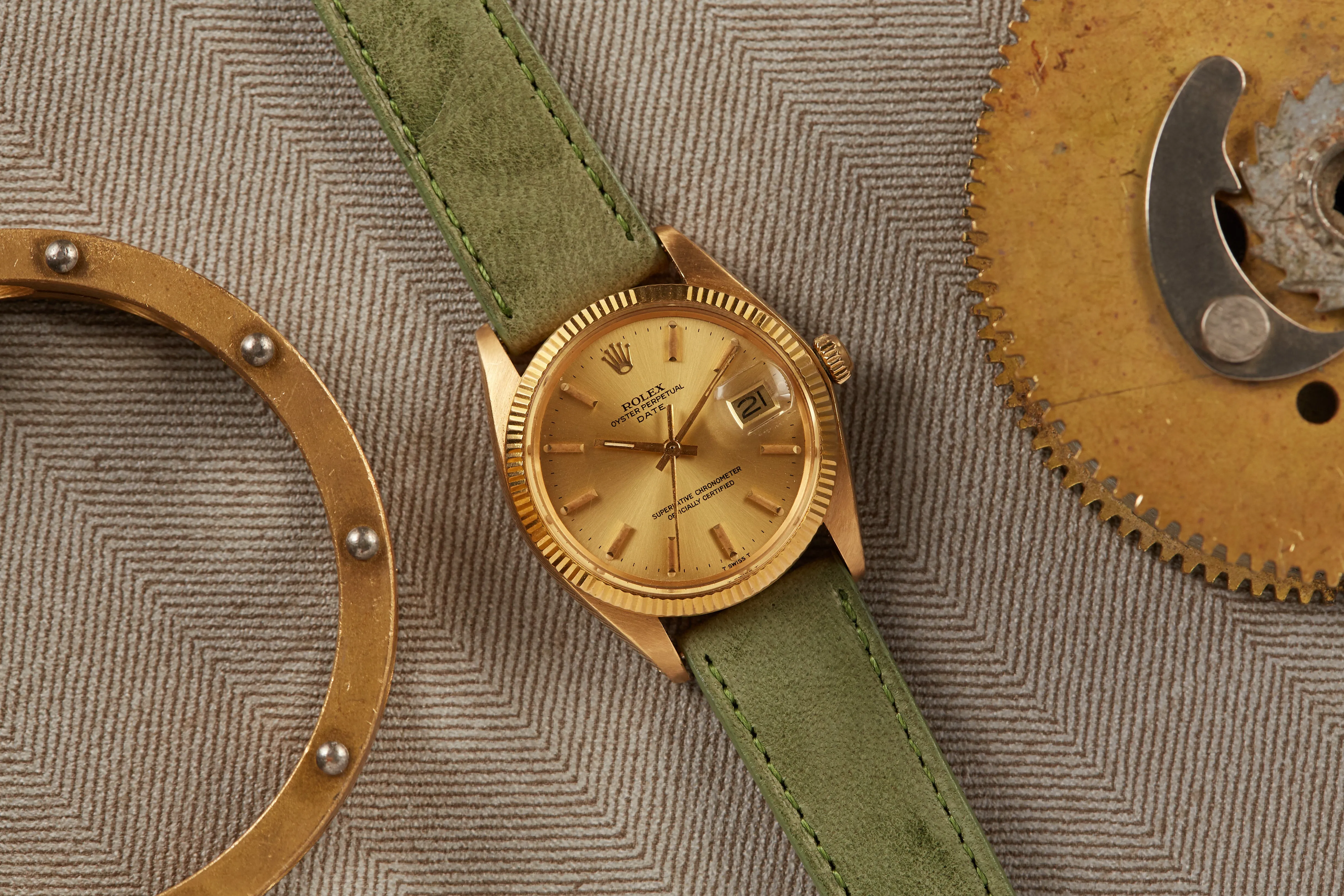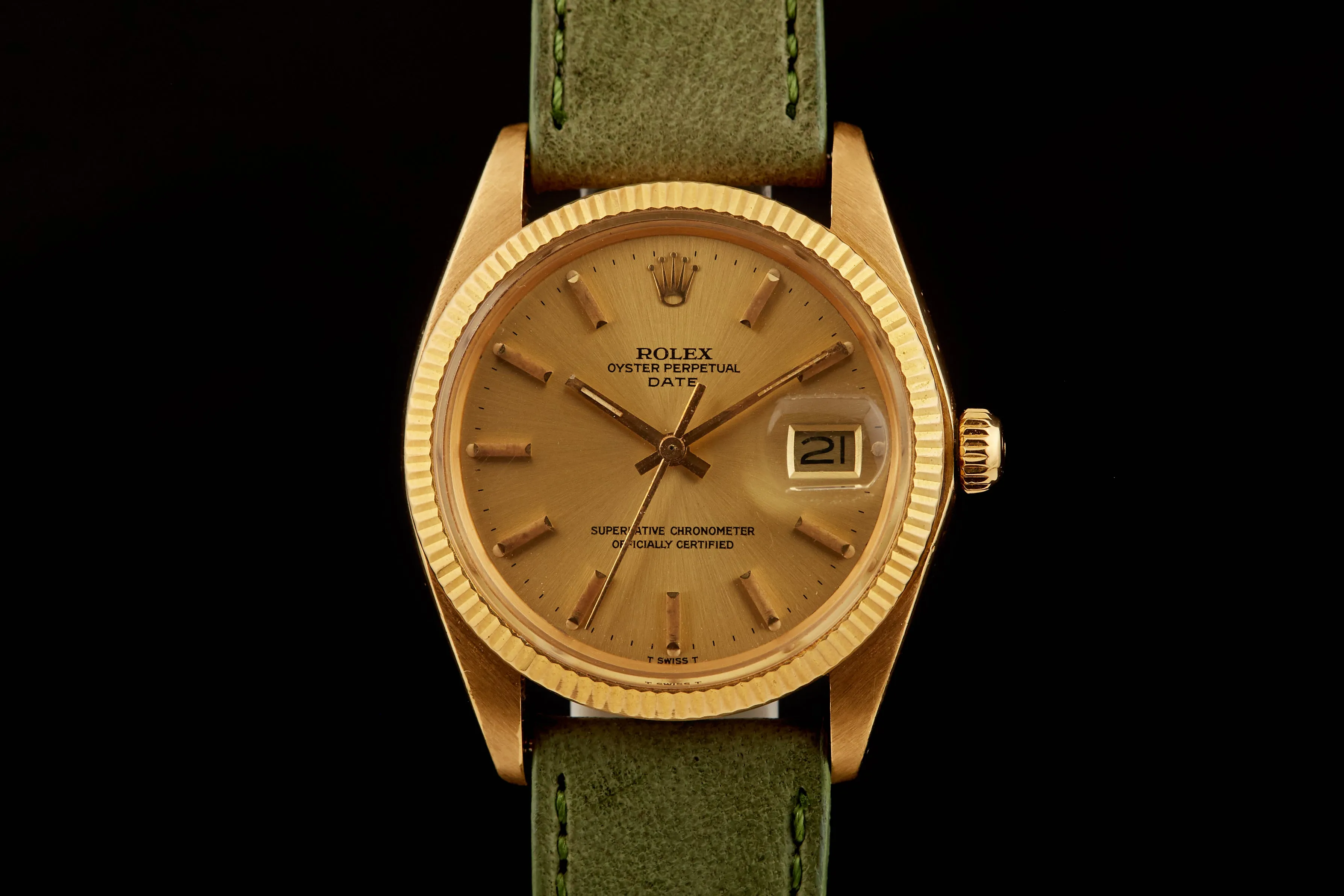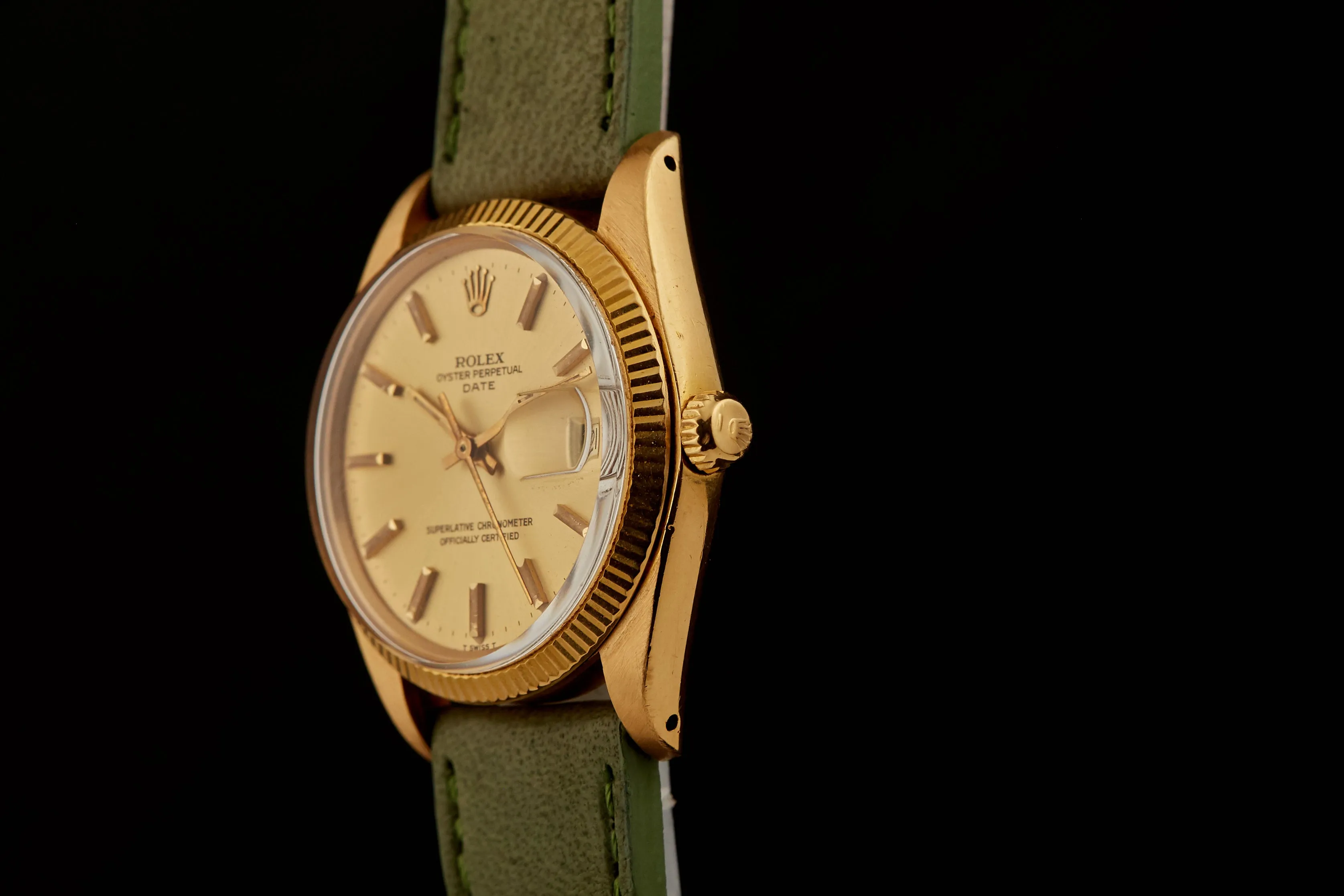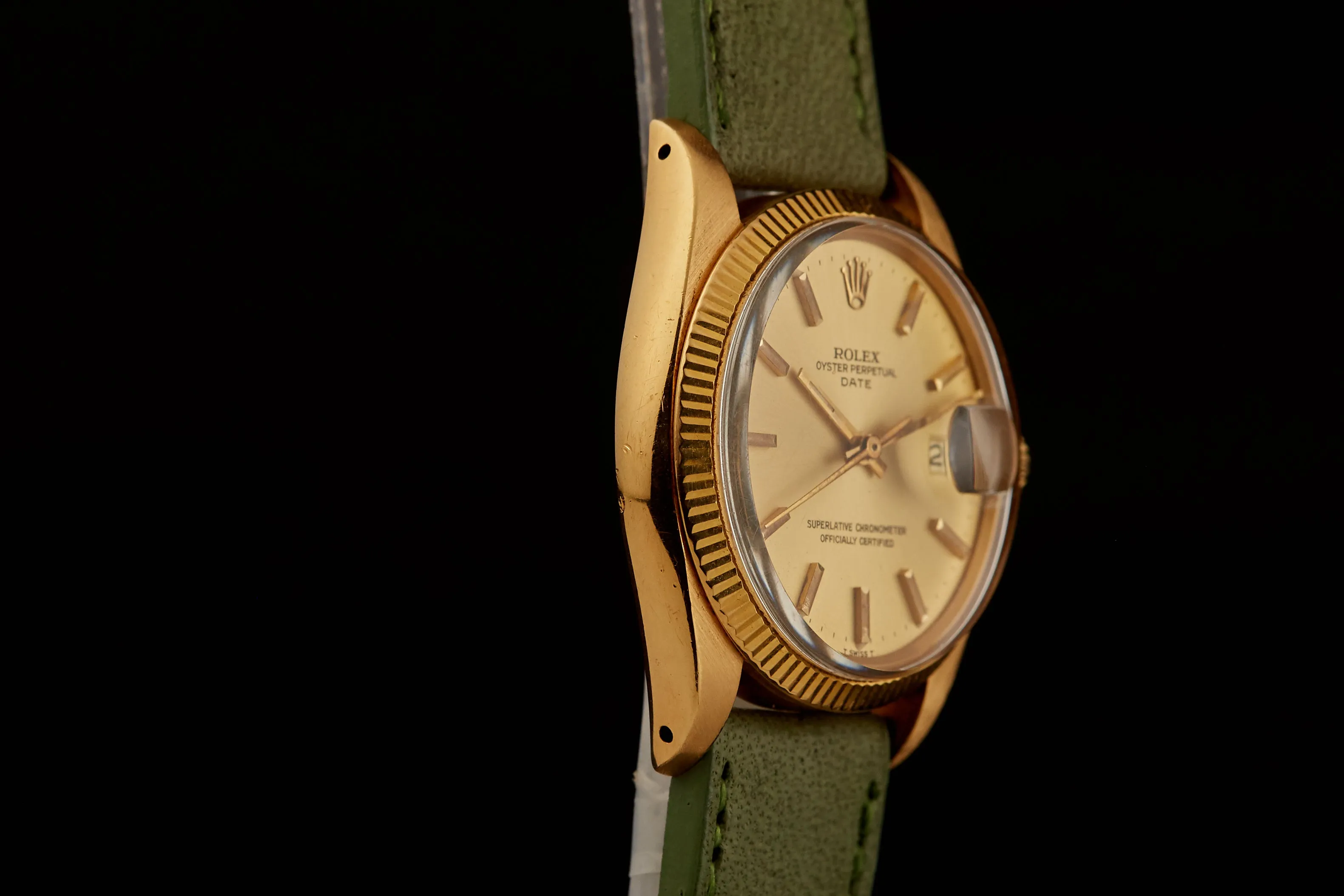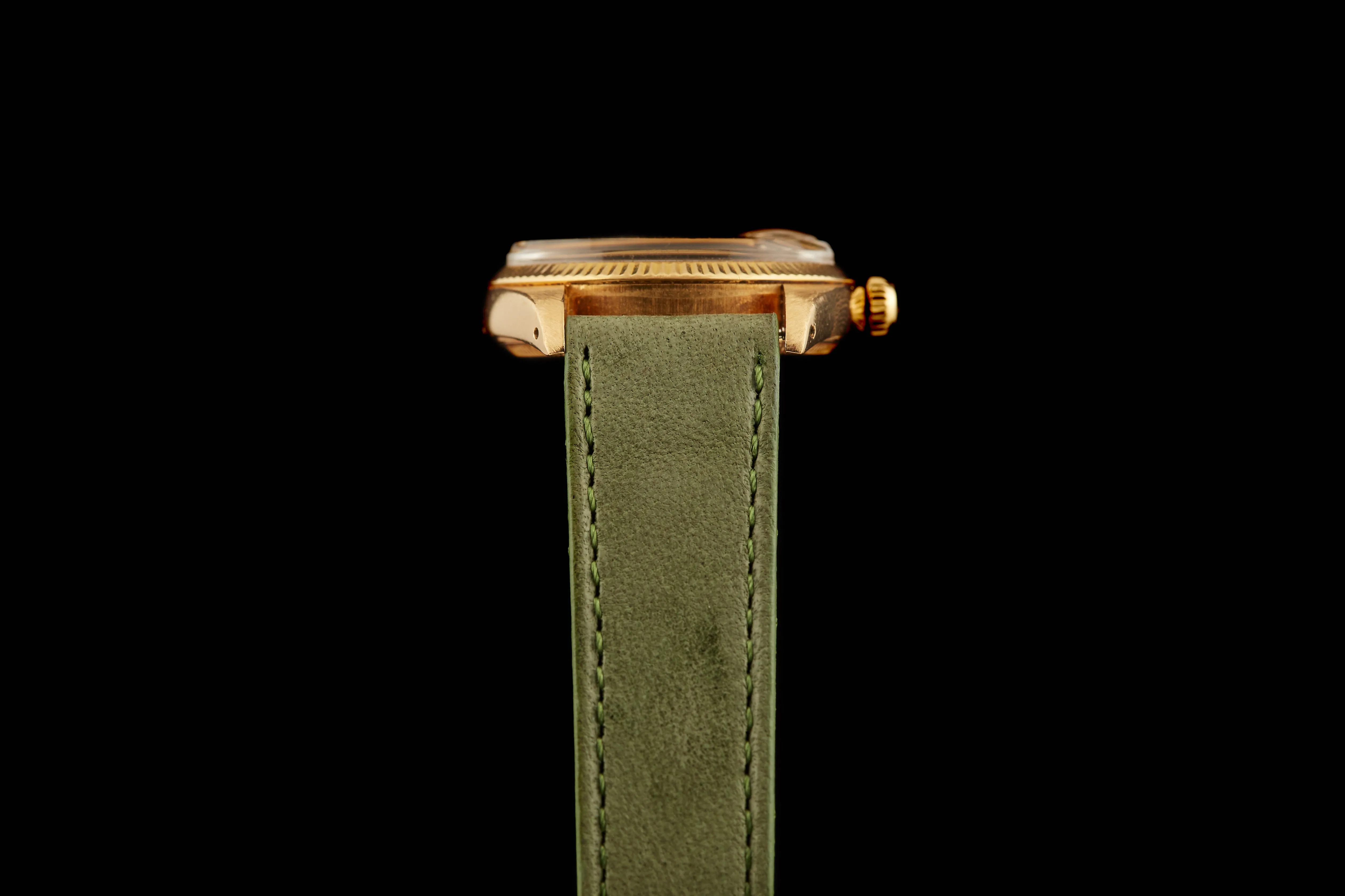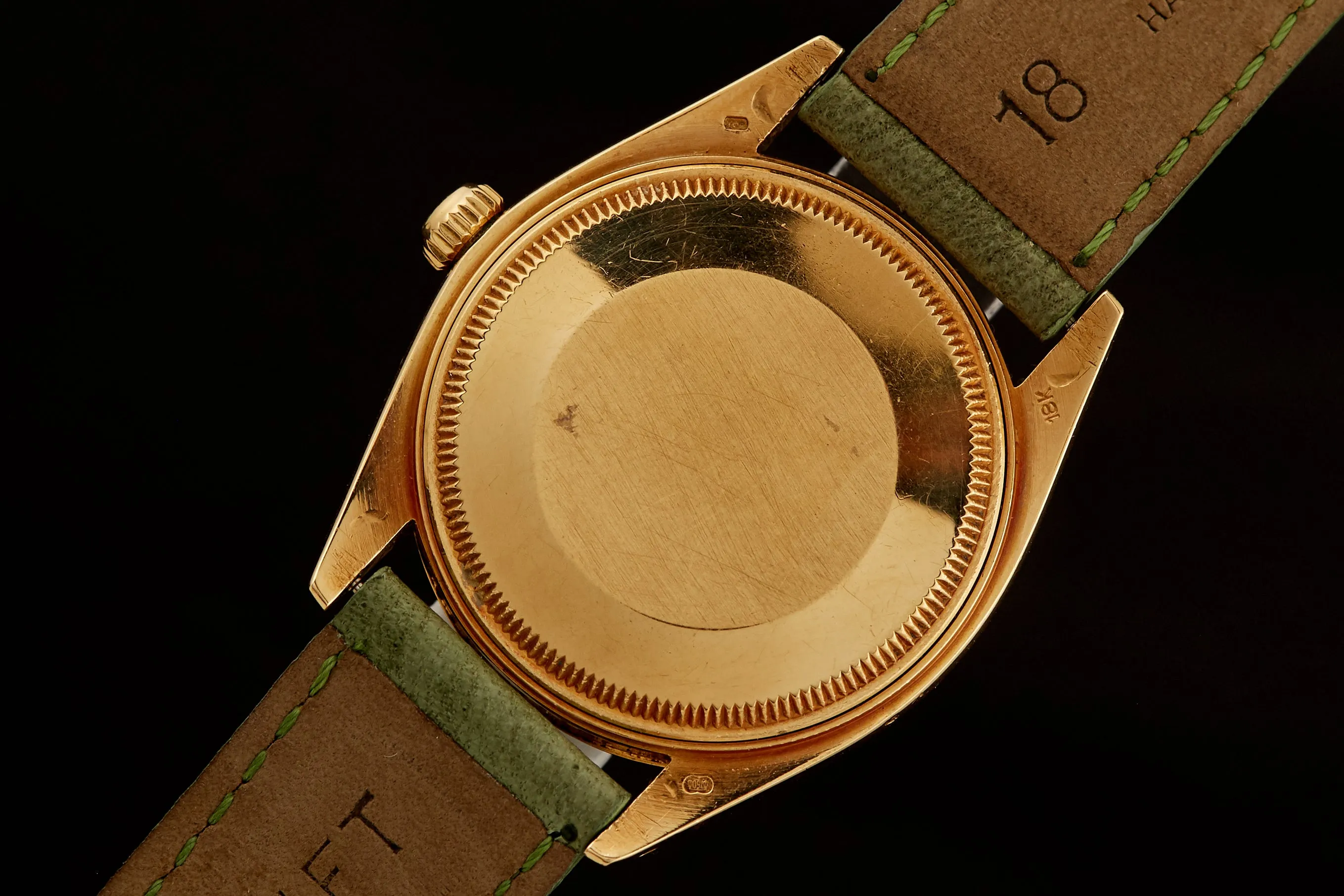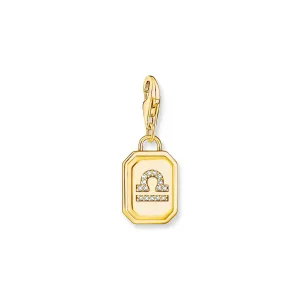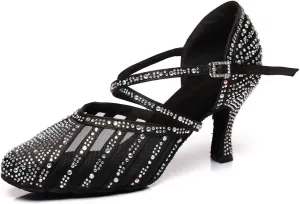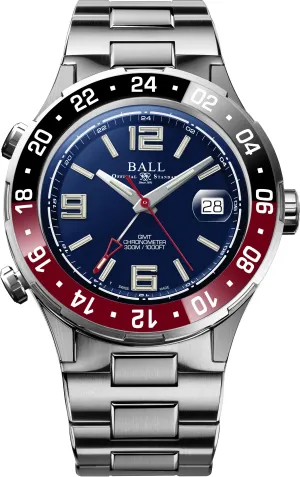In a world were steel sport Rolex is less and less attainable, there is still hope. Paradoxically, the more accessible option comes in the form of solid gold.
We know... its a bit confusing...
Oyster Perpetuals continue to be some of the brands most accessible offerings from a value standpoint. Slightly smaller than a Datejust, Oyster Perpetuals offer a whole lot of watch for the price you pay. Case and point, this 18k Yellow Gold Oyster Perpetual Date for a tad over $6k. If you walk into a Rolex boutique, a brand new steel one will cost the same.
The Oyster case shows sharp lugs, crisp hallmarks, and is constructed from thick 18k Yellow Gold, the gold-toned dial adds elegance and balance to its overall presence. If you don't believe us, we urge you to try it on at our Manhattan showroom by scheduling an appointment.
At 35mm, this piece is far more understated than the words 'solid gold Rolex' usually connote. If you don't believe us, we urge you to try it on at our Manhattan showroom by scheduling an appointment!
The Story
Rolex first patented the Oyster case in 1925, but the quest for a waterproof and dust-proof case began shortly before the First World War. The cases of the Great War and the early 1920s came in two or three pieces with an inner case that shielded the movement (then a manual-wind movement) from the wet, dusty conditions of the battlefield. The Oyster case of 1925 represented the culmination of ten years of development. It gained notoriety in 1927, when Mercedes Gleitze became the first British woman to swim across the English Channel, wearing - you guessed it - a Rolex. A series of advertisements followed, featuring smiling flappers holding their Rolexes in fishtanks.
As with the Oyster case, the Perpetual movement saw many iterations before finally being perfected in the 1930s. Rolex's first automatic movement quietly debuted in 1931, without the fanfare that followed the introduction of the Oyster case. The movement was met with some consternation from purists who decried the "extreme novelty" of a self-winding watch. Nevertheless, Rolex could see that they had struck gold with the Perpetual movement. They continued to develop and improve it over the years, establishing a line of watches that would stand as an alternative to Rolex's sportier models.
The Oyster Perpetuals of the 1960s and 1970s remain some of Rolex's best-loved timepieces. Elegant, with clean lines, the watches are nevertheless sturdy, coming in stainless steel or 18k yellow or pink gold. Meant to be worn every day, the Oyster Perpetual Date combines elegant looks with rugged dependability.


